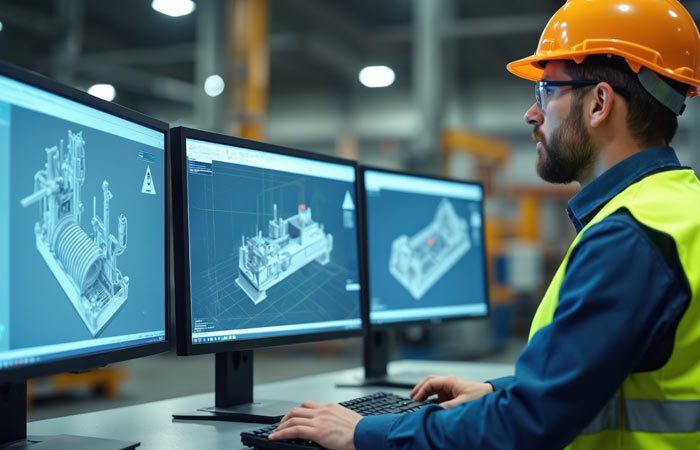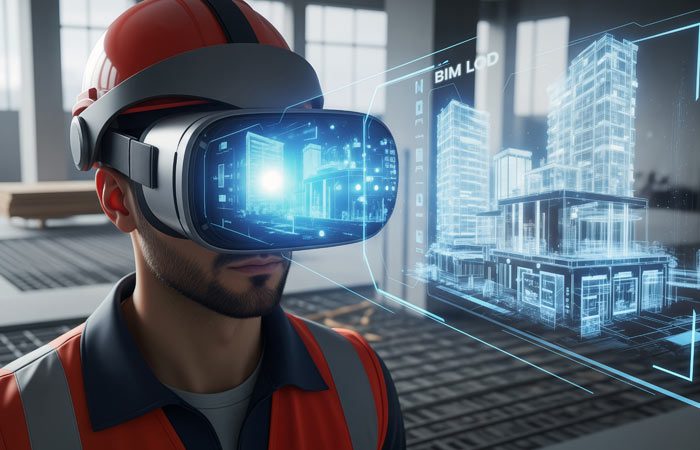
4D & 5D BIM: Revolutionizing Project Scheduling and Cost Management
The construction industry is rapidly transforming under the influence of digital innovation, and Building Information Modeling (BIM) lies at the heart of this shift. While 3D BIM focuses on visualizing the geometry of a project, the addition of the fourth and fifth dimensions—time and cost—brings unmatched clarity and control to construction planning.
4D BIM and 5D BIM are no longer optional tools; they are becoming essential for companies aiming to deliver projects efficiently, accurately, and within budget.
Understanding 4D and 5D BIM
At its core, BIM is about creating a shared digital representation of a building’s physical and functional characteristics. When time-related data is integrated into 3D models, it evolves into 4D BIM, enabling precise construction scheduling with BIM. Similarly, when cost data is embedded, the model becomes 5D BIM, offering reliable BIM cost management and estimation.
- 4D BIM Construction Planning: Connects project activities with 3D models to create a dynamic project timeline. Teams can visualize how the project will evolve day by day or phase by phase, making potential delays or clashes visible before they occur.
- 5D BIM Estimation: Links material quantities, procurement, and labor costs with the 3D model. This ensures that budget forecasting and expenditure tracking are far more accurate than traditional spreadsheet-based approaches.
Together, these dimensions bring project managers, engineers, and stakeholders onto the same platform, allowing data-driven decision-making across the project lifecycle.
Why 4D BIM Matters in Project Scheduling
Traditional scheduling often relies on static Gantt charts or CPM (Critical Path Method) diagrams. While effective to some extent, these tools fail to capture the spatial and temporal complexity of modern construction projects. With BIM project scheduling, stakeholders can:
- Visualize Sequencing – A project timeline is represented in 3D space, showing exactly when and where each element will be built.
- Identify Risks Early – By simulating construction activities, teams can detect clashes in scheduling—like multiple trades working in the same space at the same time—long before they happen onsite.
- Enhance Communication – Instead of reading technical schedules, clients and non-technical stakeholders can “see” the project unfold virtually, bridging the gap between planners and decision-makers.
- Improve Resource Utilization – By aligning manpower, equipment, and material delivery schedules, companies minimize downtime and maximize productivity.
In short, digital construction management powered by 4D BIM transforms static plans into living, adaptable roadmaps.
The Power of 5D BIM in Cost Management
Managing costs is one of the greatest challenges in construction. Projects often face overruns due to miscalculations, unexpected site conditions, or inefficient procurement. 5D BIM estimation solves these challenges by embedding financial data into the digital model.
With 5D BIM, project teams gain the ability to:
- Generate real-time, model-based cost estimates at every design stage.
- Automatically update budgets when design changes occur.
- Evaluate “what-if” scenarios to compare material options, construction techniques, or supplier quotes.
- Improve transparency by offering clients and stakeholders clear, data-backed cost insights.
By integrating cost data with scheduling, BIM in project management creates a direct link between time and money. If the schedule changes, costs are automatically recalculated, enabling teams to make quick, informed decisions.
Benefits Across the Project Lifecycle
The true strength of BIM integration in AEC (Architecture, Engineering, and Construction) lies in its ability to deliver value throughout the entire project lifecycle.
- Design Phase: Teams can simulate different designs with cost and schedule implications attached, helping clients choose optimal solutions.
- Construction Phase: Project managers benefit from synchronized BIM cost and time savings, ensuring efficient sequencing and expenditure control.
- Operation and Maintenance: The data-rich model continues to provide insights for facility management, lifecycle cost analysis, and future renovation planning.
By leveraging both 4D and 5D dimensions, companies shift from reactive problem-solving to proactive, data-driven strategies.
Real-World Impact of Digital Construction Management
Organizations adopting 4D and 5D BIM are already seeing measurable benefits:
- Reduction of costly rework due to better clash detection.
- Shortened construction timelines through accurate sequencing.
- Enhanced collaboration across diverse project teams.
- Stronger client confidence due to transparent, predictable outcomes.
For example, a large infrastructure project using BIM in project lifecycle management might reduce project delivery time by weeks or months, simply by avoiding scheduling conflicts and ensuring accurate procurement. Similarly, large-scale commercial projects often save millions in costs through accurate material take-offs and automated updates.
TAAL Tech’s Contribution
Global engineering service providers like TAAL Tech are enabling construction firms to adopt these digital solutions at scale. By combining domain expertise with advanced BIM in project management practices, they help clients achieve smoother BIM project scheduling, precise 5D BIM estimation, and long-term lifecycle value. Their approach demonstrates how engineering service providers can act as catalysts in accelerating BIM-driven digital transformation for AEC companies worldwide.
The Future of 4D & 5D BIM
As the industry evolves, the integration of digital construction management tools will only deepen. We can expect to see AI-driven predictive scheduling, IoT-enabled cost tracking, and even greater automation in design-to-construction workflows. For companies ready to embrace these innovations, the rewards will include faster delivery, lower costs, and a stronger competitive edge.
Final Thoughts
The adoption of 4D BIM and 5D BIM is not just about technology—it’s about reshaping how the construction industry plans, manages, and delivers projects. By combining time and cost intelligence with visual models, BIM in project management creates an ecosystem of efficiency and transparency. From construction scheduling with BIM to precise cost forecasting, these advancements mark a pivotal shift toward smarter, leaner, and more resilient construction practices.
For companies across the AEC spectrum, the message is clear: the future of construction lies in embracing the full potential of BIM—not just as a design tool, but as a cornerstone of project scheduling, cost control, and lifecycle management.


